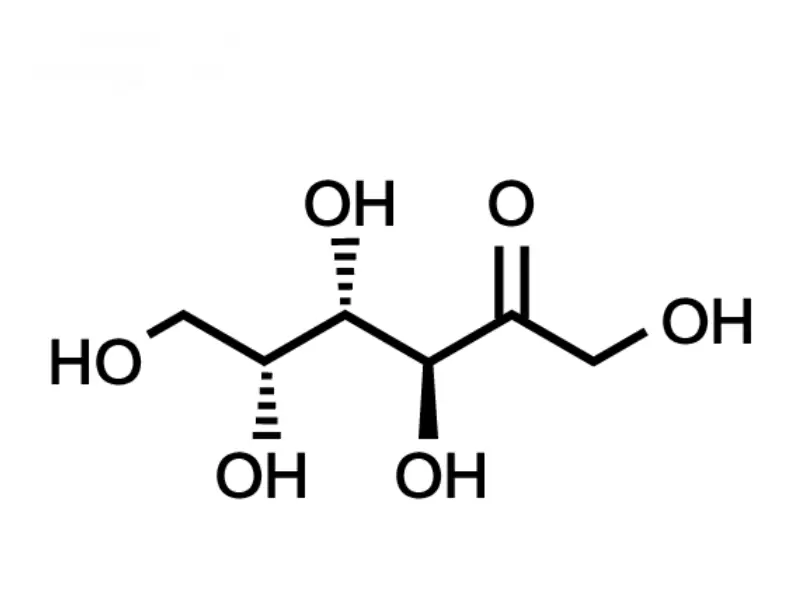Exploring Fermented D-Tagatose Products in Food and Health Industries
4 min readD-tagatose has attracted increasing global attention as innovative functional ingredients in food and pharmaceutical applications. Identified by CAS No.: 87-81-0 and typically appearing as a white to off-white powder, this rare sugar provides nearly 90% of the sweetness of sucrose but with only one-third of its caloric value. Unlike conventional sweeteners, D-tagatose undergoes selective fermentation in the human gut, offering unique physiological effects that extend beyond sweetness.
Since its approval by the U.S. FDA in 2000, followed by the FAO/WHO Joint Expert Committee on Food Additives (2001), the European Union (2003), and China (2014), D-tagatose has established itself as a versatile compound at the intersection of nutrition science, metabolic health, and industrial innovation. In this blog post, Viablife, a high purity natural ingredients exporter, will share the health implications of fermented D-tagatose products for sale, its industrial perspectives, etc.
Scientific Background of D-Tagatose Fermentation
One of the most fascinating aspects of D-tagatose lies in its limited absorption in the small intestine – only about 20% is absorbed. The remaining majority becomes a substrate for microbial fermentation in the colon. This selective fermentation supports the growth of beneficial gut bacteria and suppresses harmful species.
During fermentation, intestinal microorganisms convert D-tagatose into short-chain fatty acids (SCFAs) such as butyrate. These metabolites contribute to gut barrier integrity, colonocyte energy metabolism, and anti-inflammatory pathways. This microbial fermentation process explains why fermented D-tagatose products are now studied not only as sweeteners but also as prebiotics with clinically relevant health effects.

Fermented D-Tagatose Products in Functional Foods
Incorporation into Low-Calorie Formulations
The use of fermented D-tagatose sweeteners in baked goods, beverages, and candies demonstrates its ability to mimic sucrose in both sweetness and processing. Its participation in caramelization and Maillard reactions allows manufacturers to maintain authentic textures, aromas, and colors, making it more suitable than some artificial sweeteners that lack such properties.
Synergy with Other Sweeteners
Fermented D-tagatose products also show synergistic effects when combined with high-intensity sweeteners. This interaction enhances overall sweetness perception while masking off-flavors, which is especially valuable in reduced-sugar beverages and functional snack formulations.
Health Implications of Fermented D-Tagatose Products
Supporting Metabolic Balance
As a low-calorie rare sugar, D-tagatose offers potential benefits for obesity prevention and blood glucose regulation. Unlike sucrose, it has minimal impact on insulin secretion and glycemic load, making it a promising adjunct in dietary management of type Ⅱ diabetes. Current clinical research explores its role in modulating hepatic glucose production and improving insulin sensitivity.
Prebiotic Functions in Gut Microbiota
The fermentation of D-tagatose by gut flora positions it as a natural prebiotic compound. By stimulating the growth of Lactobacillus and Bifidobacterium species, fermented D-tagatose products help re-balance intestinal microbiota composition. The production of butyrate during fermentation contributes to colonic health and may reduce risks associated with metabolic syndrome, inflammatory bowel disease, and colorectal cancer.
Oral Health Contributions
Another overlooked application of D-tagatose is in oral health. Since oral bacteria cannot effectively metabolize D-tagatose, it reduces acid production in the mouth, thereby decreasing the risk of caries, gingivitis, and enamel erosion. Fermented D-tagatose formulations are thus entering the functional dental care market in gums, lozenges, and sugar-free oral health supplements.
Industrial Perspectives on Fermented D-Tagatose Ingredients
Rare Sugars as Biotechnological Substrates
In addition to direct consumption, fermented D-tagatose derivatives serve as substrates in rare sugar biotransformation pathways. Using enzymatic strategies such as the Izumoring approach, D-tagatose can be converted into rare sugar alcohols including D-sorbitose, D-tagitol, and galactitol. Each of these products exhibits distinct physiological properties and expanding applications in nutraceuticals and pharmaceuticals.
Process Considerations in Fermentation
From an industrial perspective, optimizing microbial strains and enzymatic systems for large-scale D-tagatose fermentation remains a priority. Research focuses on identifying efficient microbial producers, improving yield through metabolic engineering, and reducing costs to support mass production. Companies working in food biotechnology are now exploring sustainable fermentation systems for the commercial supply of tagatose and its derivatives.
Regulatory Recognition of Fermented D-Tagatose Products
The global regulatory acceptance of fermented D-tagatose products has facilitated their commercial growth. FDA approval in 2000 was followed by endorsements from international organizations, validating its safety and encouraging widespread application. Today, fermented D-tagatose is not only integrated into health foods but also investigated as an active ingredient in pharmaceutical preparations targeting obesity, metabolic syndrome, and gut health disorders.
Why Choose Viablife Tagatose?
Viablife Tagatose is fermentation-based, ensuring a sustainable and non-animal origin source. With a cost-effective production process and consistently high purity, it offers reliable quality for food, beverage, and pharmaceutical applications.
Conclusion
Fermented D-tagatose products represent far more than a sugar substitute. With a sweetness profile close to sucrose, significantly lower caloric value, and unique fermentation-driven physiological effects, this rare sugar is reshaping the way researchers, food technologists, and health professionals view sweeteners. Its role in metabolic balance, prebiotic functions, oral health protection, and rare sugar bioconversion establishes D-tagatose as both a commercial ingredient and a scientific resource.
https://www.viablife.net/news/fermented_d_tagatose_products_in_food_and_health_industries.html
Viablife